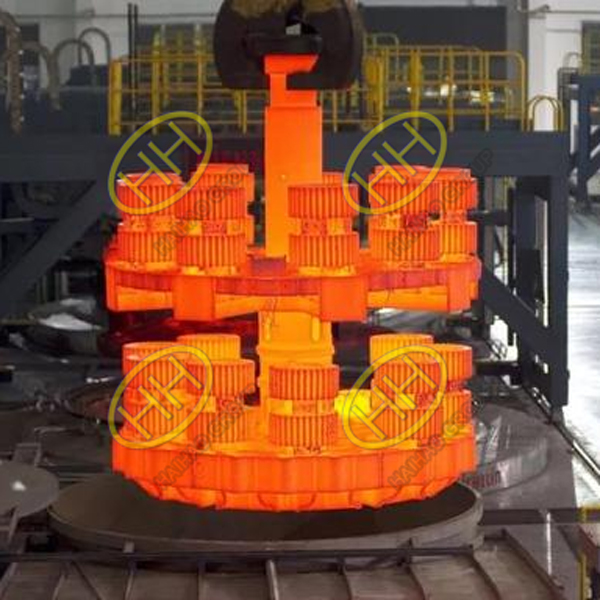Factors influencing heat treatment deformation
Heat treatment deformation is influenced by several factors, each contributing to the overall behavior of the material during the process. Understanding these factors is crucial for controlling and minimizing deformation. Below are the key factors:
1.Carbon Content and Its Impact on Deformation
High carbon steels exhibit lower deformation compared to medium carbon steels due to their increased yield strength. In most cases, for carbon steels like T7A, the deformation is minimal. When the carbon content exceeds 0.7%, the tendency is to shrink, while for carbon content below 0.7%, both internal and external diameters tend to expand. The relatively low yield strength of carbon steel, especially in components with cavities or inner holes, makes it prone to larger deformation, causing expansion of these cavities. On the other hand, alloy steels, with higher strength and a lower martensite start (Ms) point, exhibit reduced quenching deformation, generally resulting in contraction in the cavities.
2.Effect of Alloying Elements on Deformation
Alloying elements influence heat treatment deformation by affecting the Ms point and hardenability of the steel. Elements like manganese, chromium, silicon, nickel, molybdenum, and boron lower the Ms point, increasing the amount of retained austenite, reducing volume changes, and minimizing quenching deformation. However, these elements also increase steel’s hardenability, leading to larger volume deformation and stress during the process. Silicon, tungsten, and vanadium have minimal effects on the Ms point, and their inclusion helps reduce deformation, making them suitable for producing low-deformation steels.
3.Effect of Initial Microstructure and Stress State
The initial microstructure of the workpiece, including carbide morphology, size, distribution, and alloy segregation, affects heat treatment deformation. Spheroidized pearlite, with its higher volume and strength compared to lamellar pearlite, reduces quenching deformation. For high-carbon alloy tool steels like 9Mn2V and GCr15, spheroidizing the structure before quenching is crucial for controlling deformation and minimizing cracking.
4.Effect of Residual Stress Before Quenching
The residual stress in complex-shaped workpieces, especially those that have undergone heavy machining, significantly influences quenching deformation if not relieved prior to the process. Such stresses need to be minimized to achieve consistent results.
5.Effect of Workpiece Geometry
The geometry of the workpiece plays a crucial role in deformation. Complex shapes or asymmetric cross-sections, such as shafts with keyways or step-shaped components, experience uneven cooling. Uneven cooling above or below the Ms point can result in surface deformation, either creating concave or convex surfaces depending on the cooling rate differences. Adjusting cooling conditions and allowing sufficient transformation time for bainite can help stabilize residual austenite, reducing martensitic transformation and deformation.
6.Influence of Process Parameters
Both conventional and special heat treatment processes can lead to deformation. Key factors include the uniformity of heating, heating temperature, and heating speed during the heating phase, as well as the uniformity and rate of cooling. Uneven cooling causes similar effects as asymmetric cross-sections, and controlling these parameters can significantly reduce deformation.
By understanding and controlling these factors, manufacturers can minimize deformation during the heat treatment process, ensuring the quality and integrity of steel components.


